Medical expert of the article
New publications
Signs of a viper bite in humans
Last reviewed: 04.07.2025

All iLive content is medically reviewed or fact checked to ensure as much factual accuracy as possible.
We have strict sourcing guidelines and only link to reputable media sites, academic research institutions and, whenever possible, medically peer reviewed studies. Note that the numbers in parentheses ([1], [2], etc.) are clickable links to these studies.
If you feel that any of our content is inaccurate, out-of-date, or otherwise questionable, please select it and press Ctrl + Enter.
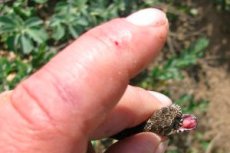
A viper bite is a serious danger to humans. However, it is often not the bite itself that is dangerous, but the consequences of improper and untimely first aid.
There are quite a lot of vipers. Meeting them can ruin any, even the most long-awaited vacation. Therefore, you should always be prepared: know the behavioral characteristics of vipers, their main signs, habitats, rules and principles of first aid.
In Russia, you can find, for example, a common viper. The snake is distinguished by its light brown color. Along the body there is a dark stripe. A fairly small snake with large fangs. It bites the skin with them, injecting poison there. After a bite from a snake of this species, fatal cases have not been recorded. It lives almost everywhere. But you can also encounter more exotic species, and much more dangerous ones.
Is a viper bite dangerous?
Those bitten by vipers usually immediately panic and wonder how dangerous it is? Will the bite end in death? What to do, where to run? Let's figure it out. Yes, the viper is certainly extremely dangerous. Its bite can be fatal. But death occurs only if you panic and do not take any action to provide assistance and remove the poison from the body.
So, the first thing you need to do is calm down, don’t panic. You need to concentrate and prepare to take immediate measures to neutralize the poison and provide first aid. If you do everything correctly and quickly, mortal danger can be avoided.
Epidemiology
According to statistics, most bites are observed in the spring. This is due to the fact that in the spring, snakes have offspring, and they become more aggressive, forced to protect their young. About 71% of bites are observed in the spring.
It is also noted that bites mostly occur in the morning (usually between 4 and 6 a.m.), when the first rays of the sun begin to warm the ground. At this time, snakes usually go out into open areas, sit on stones that are well warmed by the sun. About 44% of bites occur at this time.
Statistics show that treatment is effective if first aid is provided on the spot, the poison is immediately neutralized, and then the victim is taken to a medical facility. The effectiveness of treatment ranges from 88 to 95%. If first aid is not provided on the spot, severe intoxication syndrome develops.
The effectiveness of treatment in this case decreases to 40-50%. If first aid is not provided within the first 30 minutes after the bite, the risk of death increases to 50-60%. If first aid is not provided within 1-2 hours after the bite, the risk of death increases to 85-90%.
Causes viper bite
The most common cause of a bite is inattention. It is important to understand that no snake will ever attack a person first. Numerous studies on animal psychology have long proven that a snake attacks only for the purpose of defense, and never attacks first. In addition, before attacking, it gives numerous warning and frightening signals. And only if there is no reaction to this, and the snake sees an approaching danger, will it be forced to attack for the purpose of self-defense.
Therefore, to avoid an attack, you need to be attentive to everything around you. When you go out into nature, a person forgets that he has entered another world, where its own biocenoses have already been formed, where life flows according to its own, long-established laws. Everything in nature is in harmony. A person, as a rule, comes to nature as if it were his home, carelessly and disrespectfully walking along forest roads and paths.
But it would be worthwhile to show at least a drop of respect, attentiveness. Treat nature with respect and love, and nature will respond to you in kind. Before you take a step, look carefully under your feet, examine the path you want to take. Perhaps you will come across someone's nest, someone's hole on your way. It is worth going around, behaving carefully, so as not to disturb the snake. Then you will not put it in a position where it will be forced to defend itself.
If you meet a snake on a path. It will prefer to hide in the nearest bushes. It attacks only out of desperation. Try to stand so that the snake has a chance to escape. Do not stand directly in front of it. If the snake feels "cornered", caught, a reflex arises for the purpose of self-defense - to attack, to jump forward. Do not try to kick, push, catch, or hit the snake. Just step out of its way, and it will try not to mess with you.
Another reason is inattention. A snake never attacks without warning. If a snake contracts, raises its neck, arches and inflates, it is preparing to attack. It is better not to stand in its way.
Another reason for an attack can be careless walking through thickets, through tall grass, through unchecked territory. There may well be a snake's nest under your feet. If you "attacked" its nest, and especially if there are children there, the snake will attack. Another reason is failure to observe basic safety rules. If you know that you will have to walk through thickets, put on long pants or special protective clothing.
Risk factors
The group of risks primarily includes tourists who visit various corners of nature, walk through forests, thickets, mountain paths. If you spend the night in nature, climb rocks, caves, the risk of being attacked by a snake increases significantly. Also at risk are researchers: biologists, especially zoologists, entomologists who spend a lot of time in natural conditions: forests, reserves, wildlife sanctuaries, research facilities, biological stations. People who have constant contact with animals, including snakes, are also at risk: zoo employees, terrarium owners, circus performers who present acts with snakes and other animals, etc.
Pathogenesis
The pathogenesis is based on the violation of the integrity of the skin, which occurs as a result of a snake bite, and through which it injects poison into the body. At the site of the bite, a depression remains, a place from the wound and bite.
Swelling or redness may develop around the bite. This is explained by the body's reaction to the action of substances that enter the body with the bite. This is a toxin, which is a substance of peptide origin that is quite quickly integrated into tissue metabolism and causes serious metabolic disorders at the tissue and cellular level.
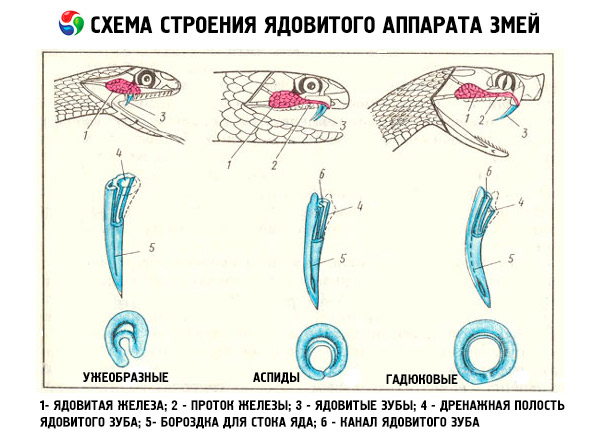
The most dangerous pathological processes are oxidative stress, toxic shock, disruption of the normal functioning of the Krebs cycle and the sodium-potassium pump. These processes represent a disruption of biochemical processes and entail disruption of the entire hormonal background, immune status, and general physical condition of the body.
The next stage of the pathological process is a violation of the water-salt balance, intense dehydration, a violation of the ratio between carbon dioxide and oxygen, which manifest themselves in the form of hypercapnia and hypoxia. These processes progress as the toxin accumulates in the blood. The activity of the main enzymatic processes is gradually disrupted, which entails a violation of the processes of catabolism and anabolism.
The circulatory system suffers first, in particular, the erythropoietic and thrombocyte systems, which manifests itself in the form of intense hypoxia, which can progress to persistent anemia and destruction of red blood cells. There is also a violation of the thrombocyte link, as a result of which the blood clotting function is disrupted.
If the poison is not removed from the body in a timely manner, it will have a neurotoxic effect, which affects the nervous system, destroys the myelin sheaths of nerve fibers, conductivity and excitability of the nervous tissue. This is clinically manifested in the form of disturbances in peripheral nervous reactions: pupils dilate, nerve cells are damaged and destroyed, sensitivity and reactivity of tissues and organs decreases.
The most dangerous is considered to be a violation of the innervation of internal organs, including the respiratory system, heart, and brain. Damage to the cerebellum, respiratory center can cause inhibition of motor reactions, damage to the respiratory muscles, up to their complete failure. The processes can be accompanied by a decrease in the frequency of respiratory movements, up to complete apnea. Also dangerous is a violation of cardiac activity, which can be accompanied by tachycardia, hypertension, up to a stroke or myocardial infarction. The process can be accompanied by convulsions, uncontrolled and unnatural movements and postures, tremor.
Severe dehydration combined with progressive hypoxia and poor circulation can lead to tissue atrophy and complete disruption of the blood clotting system.
How long does viper venom take to work after a bite?
It all depends on the individual reaction. Thus, in people prone to allergic reactions, hypersensitivity, the reaction develops much faster. The bite is especially dangerous for those who have an increased level of sensitization and allergization of the body, who have a predominantly immediate hypersensitivity reaction. In such people, the reaction occurs within a few minutes, or even seconds after the bite. This also includes people suffering from bronchial asthma, asthmatic bronchitis.
With a normal reaction of the body, the reaction to the bite can be observed after 15-20 minutes. A delayed (slow) reaction can occur a maximum of 30 minutes after the bite. During this time, it is necessary to provide first aid, otherwise irreversible consequences will occur.
Symptoms viper bite
The very first sign is pain, which occurs directly at the site of the bite. So, when biting, the viper releases poison into the bite site, which is why there is a strong pain sensation. It is impossible not to feel it. Then, a local reaction immediately begins to develop, which manifests itself in the form of redness and irritation. The bite site may swell, since the snake releases a toxin, which contains enzymes that cause the corresponding reaction.
A local reaction is observed after a few minutes and manifests itself as local redness, hyperemia, swelling, and intense inflammation. Irritation may gradually increase, and pain syndrome may develop. The pain may be quite severe. Local body temperature increases, and tissue metabolism develops.
The increase in local temperature, swelling and inflammation usually occurs in the direction of tissue depth and upwards, which is associated with the spread of poison into the body (through absorption), as well as as a result of the activity of the heart muscle. Strong progression of the disease can lead to atrophy and complete tissue necrosis.
When the poison penetrates deep into the body, systemic reactions develop: circulatory disorders, blood clotting, headache, dizziness, weakness, lethargy, nausea and vomiting appear - typical symptoms of intoxication. After this, the nervous system is affected, which manifests itself in tremors, convulsions, muscle tension, and less often - weakness. Hypertension also develops, the heartbeat and respiratory rate increase. Arrhythmia may occur, the respiratory rhythm is disturbed, up to complete respiratory arrest. All this is often accompanied by clouding and loss of consciousness, and coordination of movements is impaired.
What does a viper bite look like?
A viper bite looks like a small penetrating wound, in which poison enters the body. This poison spreads through the body quite quickly, is absorbed and causes an inflammatory and intoxication process. This causes redness, irritation and swelling. The danger arises with a tendency to allergic reactions: anaphylactic shock may develop.
Gaboon viper bite
It has a thick body. Its length reaches two meters. It has a variegated color, is bright, expressive and flashy. On the surface of the skin, you can find a beautiful interweaving of various geometric patterns. Usually, this snake behaves quite calmly, and is never the first to attack. However, the bite of this snake is extremely dangerous and all known cases of bites end in death. This is primarily due to the structure of the snake's jaw apparatus: it has rather long jaws that penetrate deep into the tissue when biting.
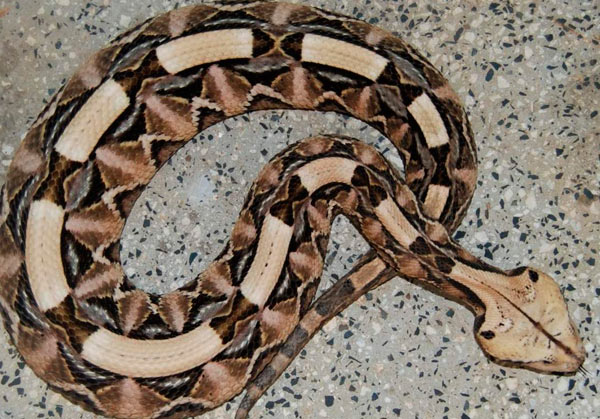
Thus, the snake injects poison, which penetrates quite deeply into the tissues, then quickly penetrates the blood and spreads throughout the body. It is impossible to save a person, since the poison very quickly reaches the brain, paralyzing the nervous system.
It is better not to meet such a deadly snake. It lives in Liberia, Sudan, Angola. It is better to avoid traveling to these areas to protect yourself. But if you still have to be in these areas, you need to protect yourself with special leather pants that are tucked into boots. They prevent biting, do not allow the poison to spread. And you should always carry an antidote with you.
Noisy Viper Bite
This snake is quite large, has a thick body, and can reach 1.5 meters in length. It is quite easy to recognize: it makes loud sounds similar to hissing, especially if it senses danger and if the enemy is close enough. Usually, the hissing becomes very loud before an attack attempt. The bite is dangerous, but the probability of a fatal outcome is about 15-20%. The snake is common in Africa.
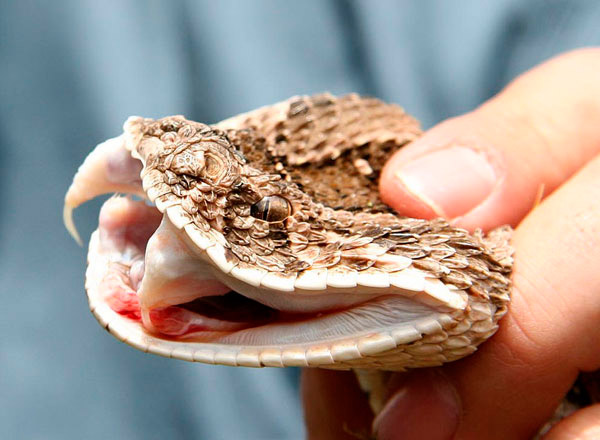
Caucasian viper bite
As the name suggests, you can meet this snake in the Caucasus. This is a beautiful snake that attracts attention with its bright coloring. It can be of different colors, it can even shine in the sun. Its color can change from a gentle yellow to a rich orange.
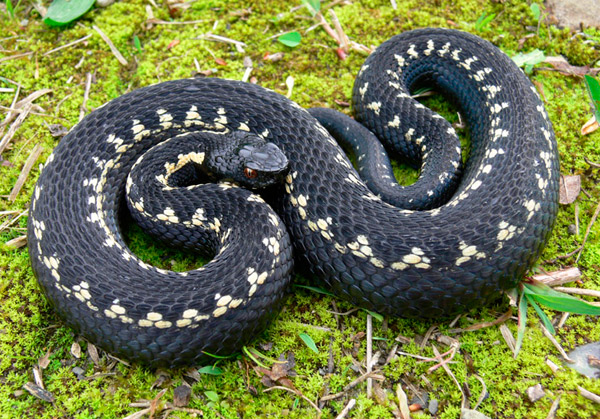
Sometimes you can also meet a marble, brick-red snake. The size of this snake is quite small, its length reaches 60 cm. There are few fatalities from the bite of this snake, however, such cases are known. It lives mainly in the territory of the Western Caucasus, in Transcaucasia, and also in the territory of Eastern Turkey. Single representatives of this species can be found throughout the entire length of the Krasnodar Territory.
 [ 23 ], [ 24 ], [ 25 ], [ 26 ], [ 27 ], [ 28 ]
[ 23 ], [ 24 ], [ 25 ], [ 26 ], [ 27 ], [ 28 ]
Chess viper bite
The chess viper also causes a number of adverse effects and can be fatal. Thus, the bite of this snake is accompanied by the development of an inflammatory process, infection, and a strong allergic reaction. Swelling, redness of tissue, and inflammation develop at the site of the bite. Then the poison is absorbed into the body and causes systemic damage to internal organs.
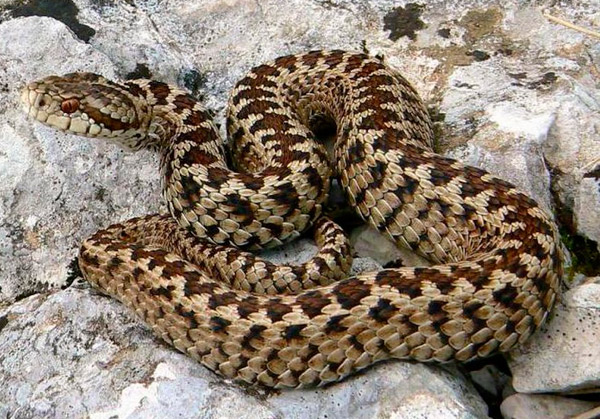
Functional disorders develop first, and only after some time irreversible structural disorders may develop. This cannot be allowed, so it is extremely necessary to provide medical care, full-fledged, in a medical institution.
Steppe viper bite
If a viper has bitten you - any, regardless of the species - you need to neutralize the poison. To do this, suck it out of the wound and spit it out. Also, to prevent a side effect of the toxin that has entered the blood, you can give the victim an antiallergic drug, for example, suprastin, tavegil. Nothing else needs to be done, you need to call an ambulance as quickly as possible and wait for it to arrive.
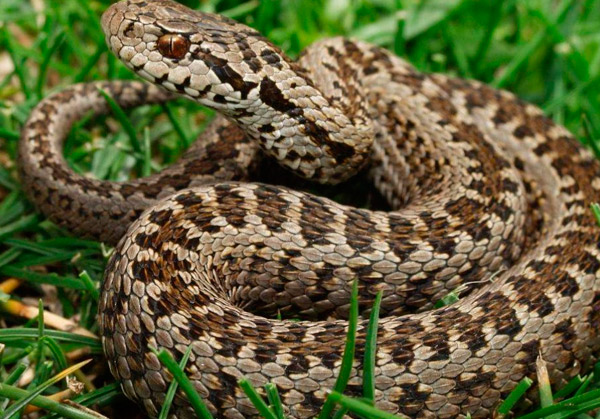
Before the ambulance arrives, the patient must be kept immobile. It is especially important to immobilize the bite site, which will slow down the absorption of the poison into the blood. It is also important to provide plenty of fluids. It is recommended to drink clean water.
After the ambulance arrives, the doctor will provide assistance on the spot. Antidote is administered without fail, as well as symptomatic assistance as indicated. The victim will be offered hospitalization, which is best not to refuse, since viper venom is very dangerous due to its long-term consequences.
Anti-intoxication therapy is required, during which all the poison that has entered the blood and internal organs is neutralized. Supportive therapy is also carried out, aimed at maintaining the main vital signs, normalizing impaired functions. It is also necessary to use symptomatic therapy aimed at eliminating the pathologies that have arisen.
Black viper bite
The danger is that not only a local but also a systemic reaction develops, during which poisoning develops at the level of the entire body. As with any other bite, immediate removal of the poison from the body is required. This must be done in the first minutes after the bite, at the scene of the incident. After this, the "Antigadyuk" serum is administered, which neutralizes the poison.
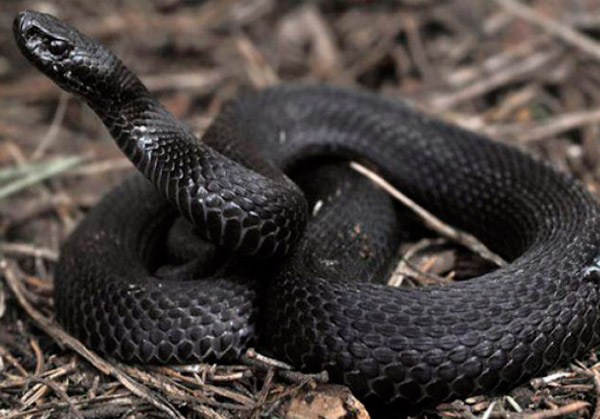
After this, mandatory treatment is required, since the poison causes serious damage to internal organs and tissues. People suffering from cardiovascular disorders should be treated with special caution and attention. This is explained by the fact that viper venom causes serious damage to the circulatory system, negatively affects the function of hematopoiesis, can cause bleeding, and disrupt blood clotting.
The load on the heart also increases, as it works in a tense mode. The heart rate, pulse, and pressure increase. All this also causes increased load on the kidneys, liver, and respiratory system. Due to the fact that the heart rate, pressure, and pulse increase, the speed and volume of blood flow also increase, which requires more air, more oxygen. Therefore, the respiratory system is also activated, breathing becomes more frequent.
It is also important to ensure reliable protection of the liver, since it is the one that processes and neutralizes the poison, as a result of which its functional and structural state is disrupted, and even an inflammatory process may develop (toxic hepatitis is quite common). The kidneys also remove processed metabolites, filter primary urea, which contains the poison, or its decay products. Therefore, inflammation and even necrosis may develop.
The extreme stage of development of the pathological process is the development of renal, hepatic and cardiac failure.
Bite of Nikolsky's viper
The viper likes to sit in the sun. It can be found especially often in places where there is a lot of brushwood and flooring. The main time for the viper to come out is the period of the morning dawn, when the sun warms, but does not bake. You can meet a viper at 5-6 o'clock in the morning.
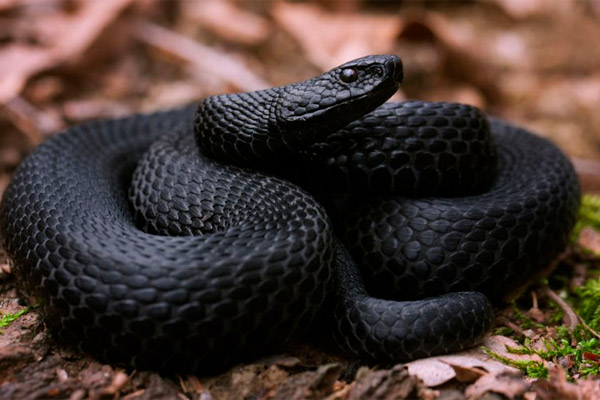
Therefore, to avoid a bite from Nikolsky's viper, it is not recommended to go to the forest, to clearings in the morning. Also, it is not recommended to go to the forest, to open forest clearings, especially after rains. It is also better to refrain from hiking from early spring to mid-summer. In early spring, vipers hatch their young, so during this period they are most dangerous (they protect children). But it is important to understand that a viper never attacks a person first: it only attacks in response to aggression towards it.
If a snake bites, you need to provide first aid to the person as quickly as possible. This consists of neutralizing the effect of the poison and preventing its further absorption. To do this, suck the poison out of the bite site. You can make an incision and drain the poison along with the blood, but this is not recommended, since an infection may later get into the wound, which will end in the development of an infectious and inflammatory process, toxic shock. You should especially avoid making incisions when in the forest, if there is no way to comprehensively treat the wound, make a bandage. After a bite, you must immediately call an ambulance. In this case, you must inform the doctor that the person was bitten by a snake. If you know the exact name of this snake, you must also inform him about it, since the doctor may have an antidote.
After the poison has been removed from the body, further detoxification therapy must be carried out, the essence of which is to further remove and neutralize the poison. Such therapy is mainly carried out in a hospital setting.
Swamp adder bite
It is necessary to provide emergency assistance as quickly as possible. To do this, it is necessary to determine which snake bit. This may be important, since further actions will depend on which snake it was. In the case of a bite from a swamp viper, emergency assistance must be provided as quickly as possible, and it should be aimed primarily at neutralizing the substance that has entered the body.
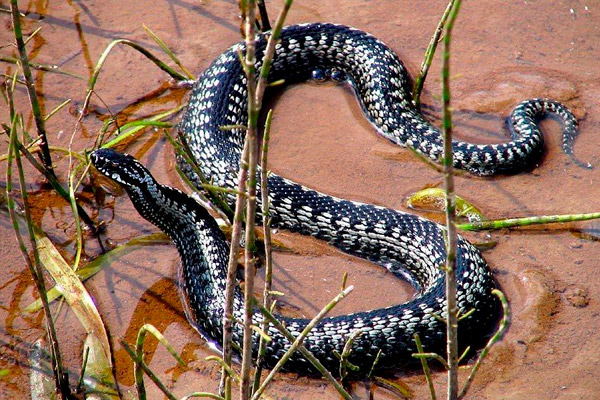
The second most important step is to neutralize the poison. To do this, you need to give the person an antidote or sorbents that will ensure the absorption and removal of the poison from the body. The third step is to render the substance harmless by using a specific antidote. After this, you need to ensure support for the body's basic vital functions, that is, symptomatic treatment is provided.
Water viper bite
Lives in shallow waters, floodplains, beds and valleys of shallow rivers and swamps. The essence of first aid is the need to suck out the poison directly from the bite site. Then you need to neutralize the poison. Antidotes are used for this. If there are no specific antidotes, they are neutralized. Before the ambulance arrives, run your finger over the palate to induce vomiting. If the person is unconscious, vomiting should not be induced, as it can cause suffocation (the person can choke on their own vomit). To induce vomiting, it is also recommended to first drink 2-3 glasses of an aqueous solution of soda (0.25-0.3 percent). You can also use a 0.5% solution of potassium permanganate for external application to the bite site, which will partially neutralize the poison.
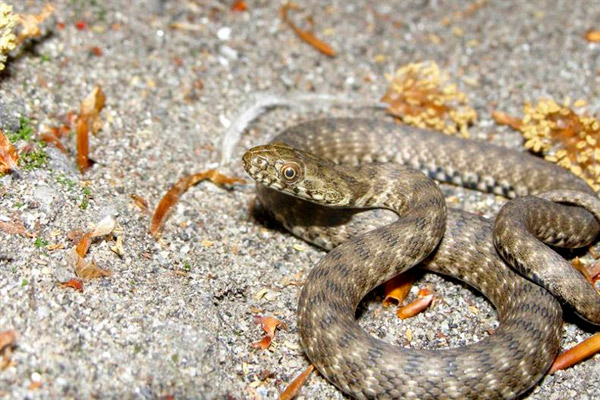
A fairly effective remedy for a water viper bite that stimulates vomiting is potassium permanganate. It is recommended to make the solution warm. Washing with visceral massage (internal organs) is used. Laxatives are used. An important condition is drinking plenty of fluids, as well as sufficient diuresis. To enhance this effect, it may be necessary to take diuretics.
Russell's viper bite
When bitten by a Russell viper, the poison is sucked out, after which it is necessary to remove and restore the changes that have occurred in the body. It is important to neutralize the poison itself, as well as the substances that come into contact with it, after which they proceed to the treatment of those pathological conditions that were provoked by the poison. To remove the poison from the body, in addition to traditional suction directly from the bite site, some drugs are also used, for example, activated carbon, sorbents (sorbex, enterosgel, tannin, manganese). They not only neutralize the poison and remove it from the body. But they also disinfect the body. Symptomatic treatment is also required, aimed at eliminating the symptoms that accompany the pathology. Thus, in case of severe pain syndrome, painkillers are used, in case of convulsive syndrome – anticonvulsants, muscle relaxants, in case of increased excitability of the nervous system there is often a need to use neuroleptics, sedatives, tranquilizers, sometimes even tranquilizers.
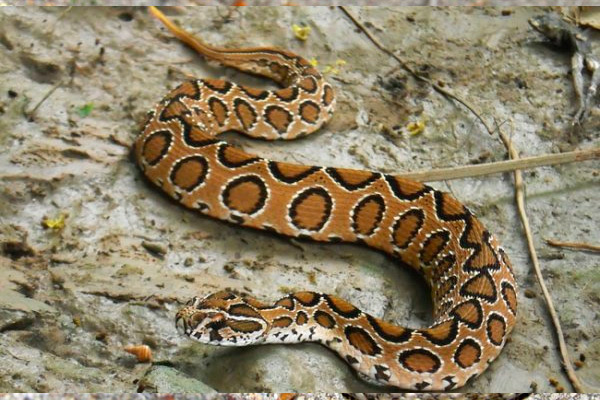
It is important to provide the patient with plenty of fluids and increase diuresis, since it is with urine that the main removal of by-products from the body occurs. In order to enhance the removal of poison from the body, you can offer the patient milk, plenty of fluids, protein water or egg whites. After the threat to life has passed, additional, restorative treatment may be required. But it is carried out when the main vital signs have already stabilized and are within the relative norm.
Bite of Uspensky's viper
The procedure for treating a bite from any snake is the same: first, the poison is neutralized and removed, then further qualified assistance is provided as indicated. In order to remove by-products and poisons from the body, various sorbents and enveloping agents can be used for a bite from Uspensky's viper. A mandatory condition is drinking plenty of fluids. Starch, flour, and egg yolks are used as the main enveloping agents.
Sakhalin viper bite
When bitten by a Sakhalin viper, it is necessary to use various diuretics. Urea, furosemide, mannitol are prescribed. These methods promote accelerated excretion of urine from the body. This is a practically traditional method that is used for any poisoning, intoxication processes. Allows to remove toxins and reduce the load on the kidneys.
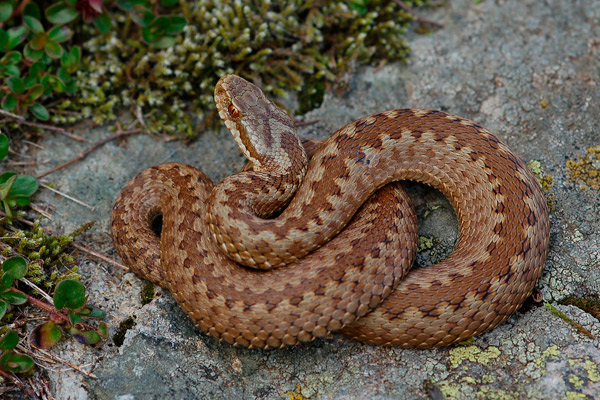
Hemodialysis allows you to cleanse your blood of toxins as quickly as possible.
Peritoneal dialysis is a method of removing toxins by binding to plasma proteins.
The hemosorption method is also used for accelerated purification of blood by passing it through an artificial purification system.
In extreme cases, if all the above methods are ineffective, a blood replacement operation can be performed. Donor blood is used.
Bite of the Crimean viper
There are a huge number of snakes in Crimea, and almost all of them are poisonous. Tourists are often bitten by the Crimean viper when traveling through the steppe, forests, mountain paths and serpentines, when visiting caves and rocky gorges. Especially if people go on an independent hike, without a guide. There are quite a lot of travel agencies in Crimea, organizers of car and hiking trips. They all organize excursions and hikes along safe paths that have been checked, including for the presence of poisonous snakes. Potentially dangerous places are marked on the maps. Guides are provided with information about snake shelters and settlements. Therefore, in order to protect yourself. It is better not to go on independent hikes, not to stay "savage". It is better to give preference to an organized vacation, in which the organizer or guide knows the route and is responsible for its safety and the safety of both the group as a whole and each individual participant.

If a Crimean viper bites, you need to provide emergency assistance to the victim as quickly as possible. You need to call an ambulance as soon as possible, having previously reported the incident. Those bitten require a careful approach, observation, which will allow you to react in a timely manner to the changes occurring in the body. A bite is often accompanied by a decrease in body temperature, a slowdown in basic vital functions, such as: a slowdown in the pulse, heart rate, and respiratory rate. In this case, the patient needs to be given plenty to drink and warmed up. It is especially important to provide warmth in the event of cold extremities: the poison has a paralyzing effect on the extremities, as a result of which blood flow is disrupted in them, and stagnation occurs.
Preference is given to symptomatic therapy, which is aimed at eliminating those pathologies that are currently observed. This may be pain relief, normalization of respiratory processes, heart condition, and blood vessels. The main task is to support the main life processes, neutralize further toxic effects on the body, and ensure the introduction of toxins and metabolic by-products.
Bite of a baby viper
It all depends on what kind of snake we are talking about, and the age of the young. It is believed that a bite from a young viper is safe, since it is still a young one and does not have an organ that produces poison. In addition, there is no fear and no need to bite (adult snakes usually attack only when necessary, in defense, and not on their own initiative).
It is also important to consider the age of the cub, as this is often the leading factor. A cub's bite can be considered safe until it reaches sexual maturity. After that, its glands begin to produce poison.
Even if the young are safe, it is almost impossible to determine exactly whether it is sexually mature and capable of producing poison. This can only be done by an experienced specialist who has been studying snakes for quite a long time. Usually, this can be determined by the condition of the skin (skin scales), as well as by the snake's teeth.
Even though the cub does not produce poison as such, its saliva contains enzymes that negatively affect the functional state of a person. The enzyme acts much more slowly than the poison. Nevertheless, it can be very dangerous. For example, an allergic reaction can develop, the final stage of which is suffocation, an asthma attack, respiratory failure, as a result of the suppression of the respiratory center in the cerebral cortex. Acute pneumonia, severe intoxication, toxic pulmonary edema and even toxic or anaphylactic shock also develop. In most cases, resuscitation measures are required, a tracheotomy may be required, since the activity of the heart, blood vessels, respiratory muscles, and brain is disrupted.
Viper bite tangentially
With a tangential bite of a viper, mainly skin lesions develop. They manifest themselves in the form of hives, redness, skin irritation, itching and burning. If an infection occurs, suppuration may occur. Severe swelling and compaction may develop. Often in such a situation, it is necessary to provide local action: treat the damaged surface with a disinfectant, then apply an anti-inflammatory, restorative cream or ointment to the skin. It is also recommended to give the patient an anti-allergic drug.
Viper bite for a child
A child's metabolism is much more developed, responsible, and the reaction occurs faster. The poison is absorbed into the blood much faster, affects the internal organs. The damage to the internal organs is much more serious than in adults. The consequences are often irreversible. Therefore, if a snake bites, you need to suck out the poison immediately. This is effective in the first 1-2 minutes, then the poison is absorbed into the blood. Edema and an allergic reaction develop immediately. Even anaphylactic shock can develop, in which the child loses consciousness, the pulse and blood pressure drop, the heart rate decreases, and a complete cardiac and respiratory arrest can occur.
If you go hiking with a child where you may encounter a snake, you need to have the "anti-viper" serum with you, which is an antitoxic serum, an antidote that destroys the toxin and removes it. But you need to take into account that this causes serious damage to the internal organs, which are vital. Therefore, inpatient treatment, hospitalization is required.
Treatment includes symptomatic, supportive, antitoxic therapy. Often the treatment is complex and consists of symptomatic, drug treatment, physiotherapy.
Diagnostics viper bite
In order to diagnose poisoning caused by snake venom, in particular, viper venom, the clinical picture is sufficient. Firstly, a trace remains at the site of the bite, in particular, a wound with small depressions caused by teeth. The poison is injected into this hole in the skin. When conducting a toxicological analysis, the snake toxin can be detected.
Upon visual inspection, a local reaction is observed, which is accompanied by redness, inflammation, irritation, and severe swelling. If left untreated, the disease progresses, in particular, all the signs of typical poisoning develop, such as weakness, respiratory failure, heart rate, nausea, and vomiting.
When the first signs of poisoning appear, including a local reaction, you need to see a doctor as soon as possible. Before that, you should provide first aid to the victim: neutralize the effect of the poison. It can be sucked out, released through an incision. It is advisable to give the victim anti-allergic drugs. This is usually where first aid ends, and the doctor providing first aid sees the clinical picture as a whole. Based on this, a diagnosis can be made - a snake bite. Then, already at the place where first aid is provided, you can accurately differentiate the type of snake. But often it is enough to know that it was a snake that bit, in particular a viper, in order to determine the measure of first aid. For viper bites, a serum is used - "anti-viper", which neutralizes the effect of the poison.
The main diagnostic tool for a bite is an examination. Usually, the doctor first questions the patient, collects general information about him, anamnesis of life. It is very important to collect information regarding the circumstances under which the bite occurred: where, at what time, how long ago the bite occurred, what the viper looked like and how it behaved. The cause may be hidden here. Thus, the doctor can accurately determine the type of snake, which will allow the correct antidote and treatment to be applied.
Then the doctor collects an anamnesis of the disease, that is, finds out exactly what the victim felt during the bite, what the first symptoms were, how quickly the signs of damage spread, whether there are systemic manifestations of the pathology, or only local ones.
The history of the current disease is very important, because on its basis it is possible to judge the features of the course of the disease, predict its further development and outcome. The doctor needs to know how long ago and under what circumstances the bite occurred in order to accurately calculate the possible outcome of the disease and know how quickly it will progress.
It is necessary to know whether any treatment was carried out, how effective it was, what other measures were taken, how quickly first aid was given after the bite, whether the poison was sucked out, whether antitoxic serum was used.
Then the doctor examines the patient. Usually, classical research methods are used, such as palpation, percussion, auscultation. During palpation, the doctor probes possible lesions, assesses the degree of hyperemia, tissue swelling, and local temperature. During auscultation, the doctor listens to breathing and heartbeat. This allows one to judge how much the poison has spread throughout the body, whether signs of systemic damage to the body, progression of inflammation and intoxication have appeared. Based on the indicators of respiratory rate, heart rate, pulse, and blood pressure, one can judge the degree of progression of the intoxication syndrome. Percussion can also reveal multiple lesions, such as foci of inflammation, swelling, and compaction.
If there is insufficient data and there is a need to clarify the diagnosis, laboratory and instrumental research methods may be prescribed, which depend on how much the disease progresses.
 [ 29 ], [ 30 ], [ 31 ], [ 32 ], [ 33 ], [ 34 ], [ 35 ]
[ 29 ], [ 30 ], [ 31 ], [ 32 ], [ 33 ], [ 34 ], [ 35 ]
Tests
First of all, they resort to the appointment of classical clinical tests. These are tests: blood, urine, feces. With the help of these tests, it is possible to evaluate the general direction of the processes occurring in the body. The importance and significance of these tests for diagnostics is that on the basis of these general data it is possible to determine the course of further diagnostics. This allows you to exclude incorrect and unnecessary tests.
So, if the analysis shows a high content of eosinophils and an increased level of histamine, an allergic process can be assumed. In this case, the range of further clarifying diagnostics is already approximately clear. There is no point in conducting a study to identify a bacterial or viral infection, prescribing complex and unnecessary studies can be concentrated in the right direction and a deeper study of the suspected pathology.
For example, if an allergy is suspected, allergy tests, analysis of the content of total and specific immunoglobulin E, and histamine levels are prescribed to clarify the data. A detailed immunogram may be required, which will display the current state of the immune system. And various bacteriological cultures, scrapings, viral and hormonal diagnostics, rheumatic tests or oncotests, etc. will be completely meaningless in this case.
Similarly, clinical tests narrow the range of possible diagnostic studies. Thus, they may indicate an inflammatory, infectious, or allergic process.
Clinical tests can provide valuable information in terms of diagnosing the consequences of poisoning and their impact on the body. With the help of tests, it is possible to assume which organs were affected by the poison, what is the degree of damage to these organs, whether the processes are reversible or irreversible. For example, if a large amount of protein is detected in the urine, it is possible to talk about the development of an inflammatory process in the kidneys. The amount of protein can be used to judge the severity of kidney damage and the predisposition to the development of renal failure.
It is also advisable to conduct toxicological studies, during which the presence of the toxin in the body, its concentration, quantitative indicators, and sometimes even its localization in the body are determined.
Instrumental diagnostics
In most cases, complex treatment that follows emergency care also requires careful diagnostics, which will allow us to accurately determine which organs and structures have undergone changes in the body. Instrumental diagnostics can be quite varied and depends on what is presumably the cause of the lesions and how the poison affected the body.
Usually prescribed after a preliminary examination and questioning of the patient, when the doctor already has a tentative diagnosis, knows what kind of snake bit, what organs were affected by the poison, how deeply the poison penetrated the body, and what pathologies it managed to provoke.
Instrumental diagnostics are prescribed after the results of basic laboratory tests are already available; in particular, the results of toxicological testing are required.
Methods of further diagnostics may be different. It all depends on which organs are affected by the poison. As a rule, the poison enters the body and first of all accumulates in the blood. With the blood, it spreads throughout the body. In this case, it gets into various organs and tissues, but pathological changes occur only in those organs that are weakened and are at risk for developing pathology.
For example, a person suffering from chronic gastritis or having a tendency to intestinal disorders will first of all experience a relapse of the disease. Thus, if a gastrointestinal disease is suspected, gastroscopy, radiography, ultrasound, colonoscopy may be required.
In a person with a weak respiratory system, frequent colds and infectious diseases, flu, bronchial asthma, the poison will primarily affect the respiratory system. The respiratory rate may increase, inflammation may develop, and the bronchi and alveoli may narrow. If respiratory diseases are suspected, a thorough examination is carried out using spirogram, radiographs, and functional tests are used.
The cardiovascular system reacts especially sharply to poisoning, since most of the toxin accumulates in the blood, passes through the blood vessels, and is pumped by the heart. The poison affects blood cells, negatively affects the blood coagulation system. Thus, in case of diseases of the heart and circulatory system, an electrocardiogram, ultrasound of the heart and other studies may be required. These studies are very important for people with chronic diseases of the cardiovascular system, since when the poison circulates in the blood, the load on the vessels and heart increases significantly. The risk of developing heart failure, myocardial infarction, toxic endocarditis increases.
For a comprehensive diagnosis, magnetic resonance imaging may be required, which allows you to assess the condition of the skeletal system and soft tissues, identify possible pathologies at the earliest stages of their formation. This is very important, since a viper bite is accompanied by the release of poison, which exhibits high tropism not only to nervous, but also to bone and muscle tissue.
Differential diagnosis
First of all, you need to determine what kind of animal bit you. A snake bite has its own specific signs. In particular, after a bite, there is a wound at the site of the bite, through which the poison is injected. In this case, small marks from teeth are usually visible, which resemble needle punctures.
The poison spreads throughout the body, resulting in a local reaction. It manifests itself in the form of a rash, itching, redness, swelling. This is the first sign of a bite, by which the degree of damage is differentiated. Swelling appears if the poison has already begun to be absorbed into the body, absorbed by nearby tissues. The deeper the absorption, the stronger the swelling. This is one of the differentiating signs by which one can judge the severity of the reaction to the bite, as well as the progression of the pathological process, the speed of its spread.
A systemic reaction indicates damage to internal organs by the poison, penetration of the poison into the blood and progression of poisoning. In this case, it is possible to clearly determine the amount of poison. For this, laboratory and instrumental diagnostics are carried out. The main method confirming poisoning by viper venom is toxicological analysis, which allows you to identify the toxic substance in the blood or urine of the victim, determine its concentration, quantity.
Prevention
A viper bite can be prevented by taking precautions when traveling, hiking, or walking through the forest or thickets.
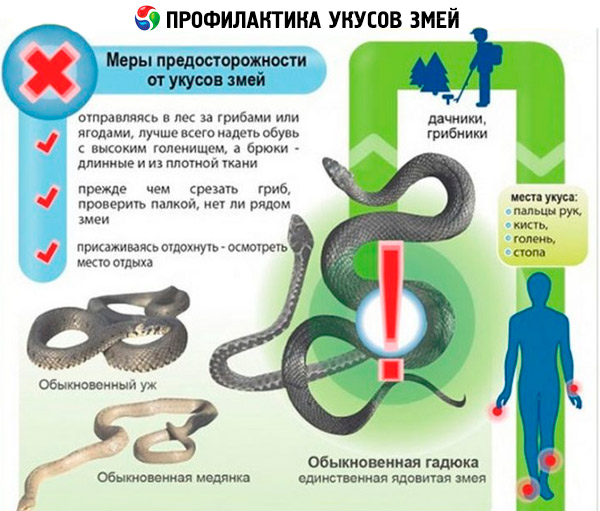
It is necessary to treat nature with care, not to touch, not to frighten snakes. It is important to carefully examine the area before taking a step. It is also necessary to always wear long pants, take with you the serum "Antigadyuk", and know how to provide emergency assistance.

